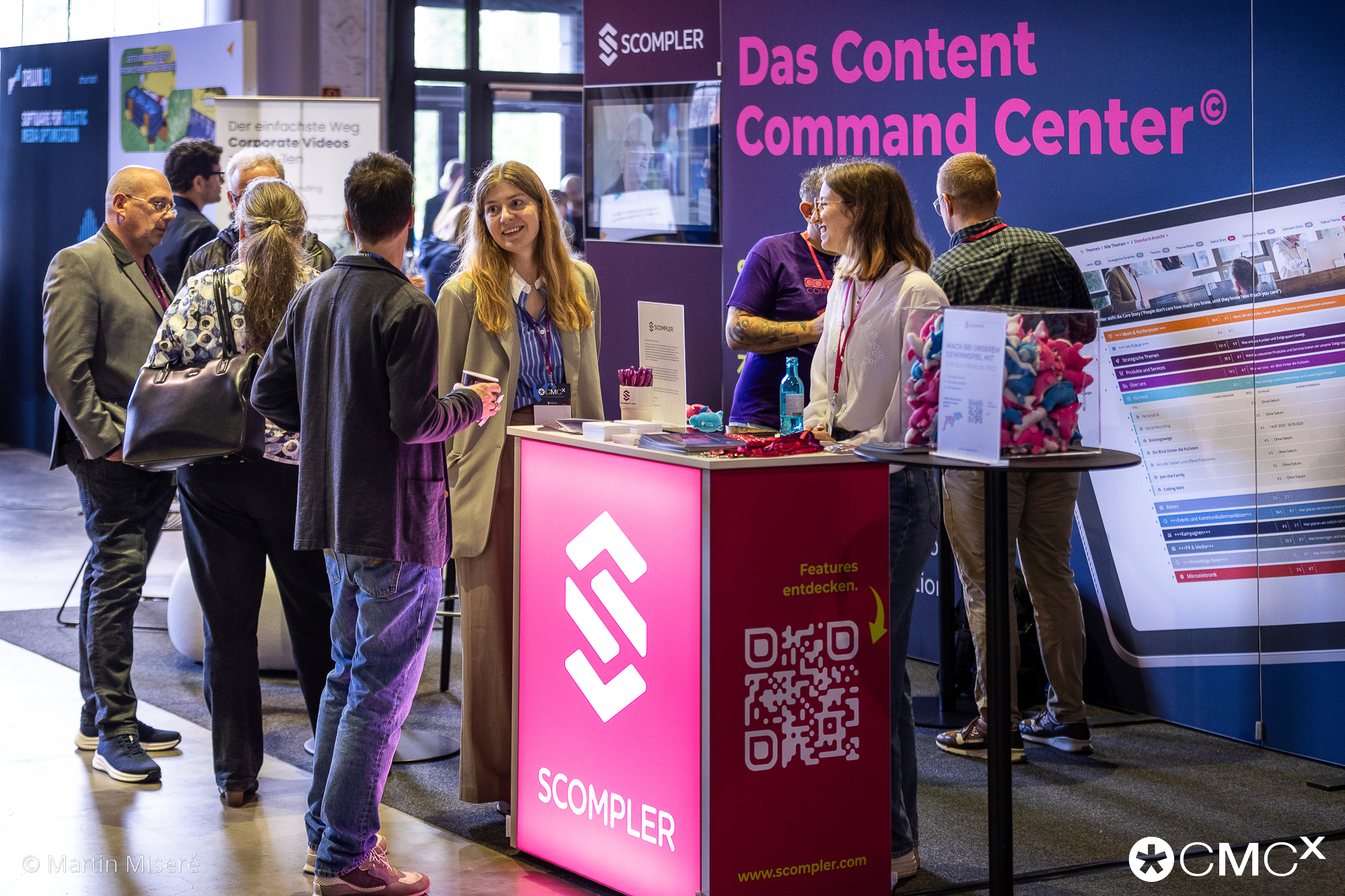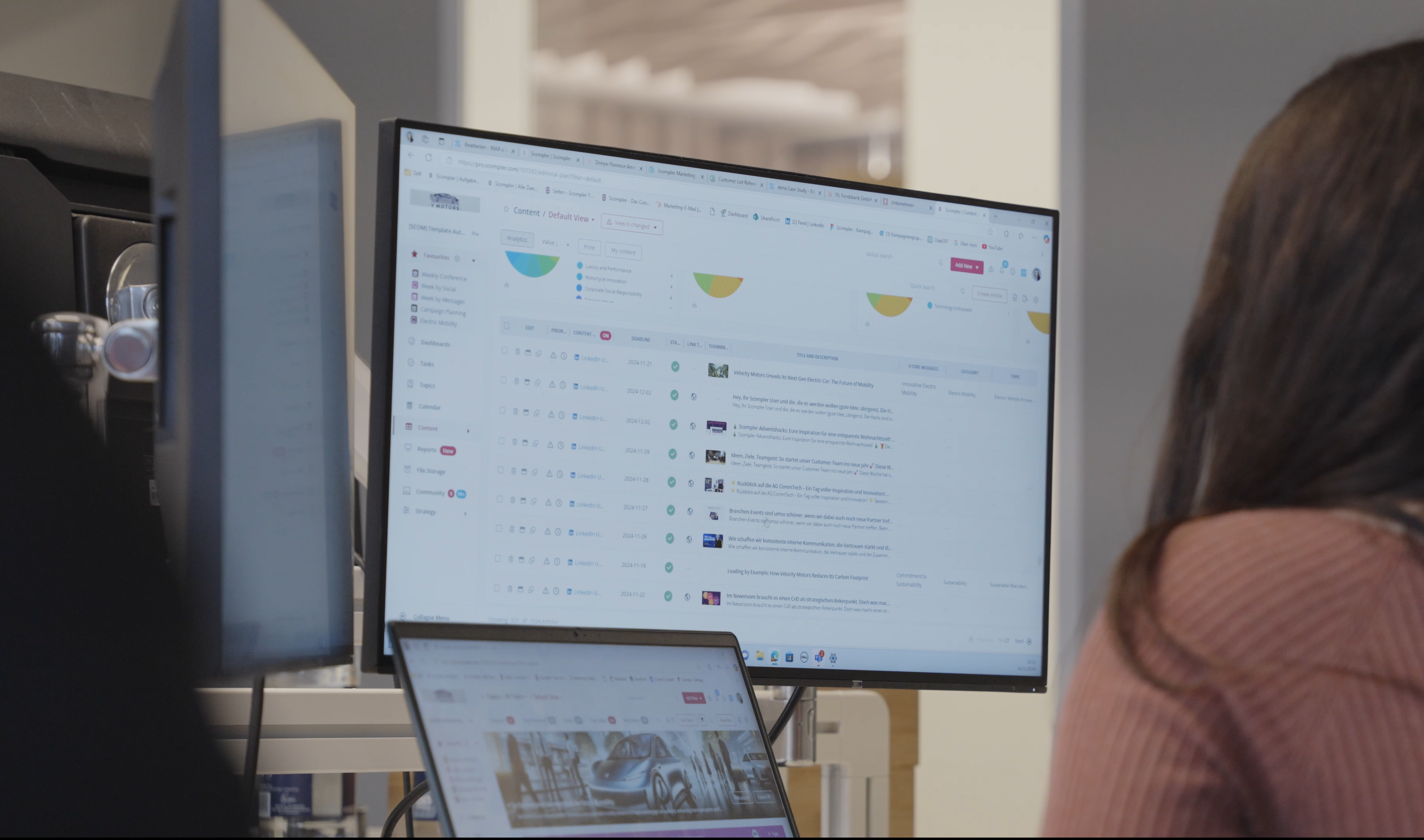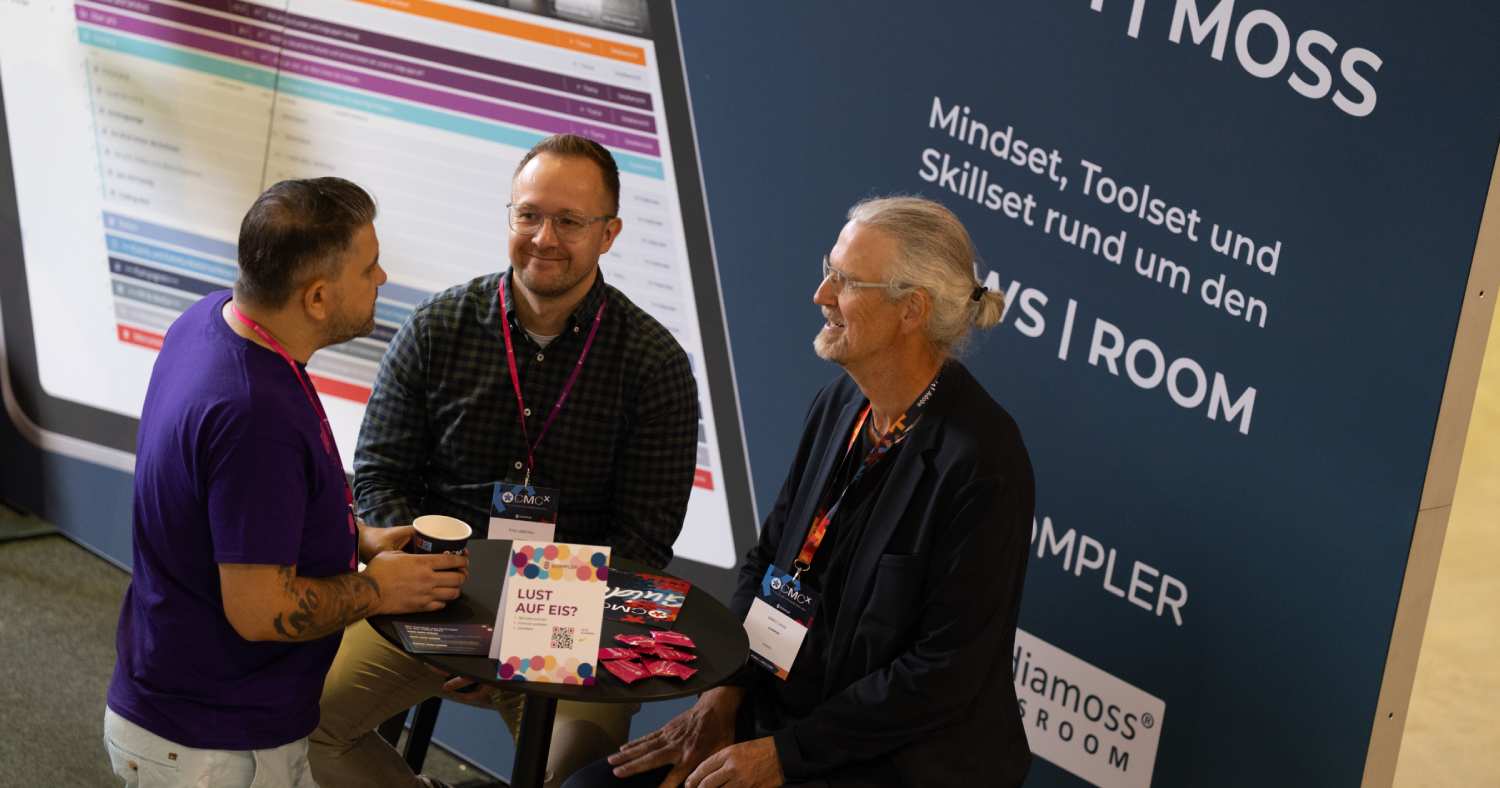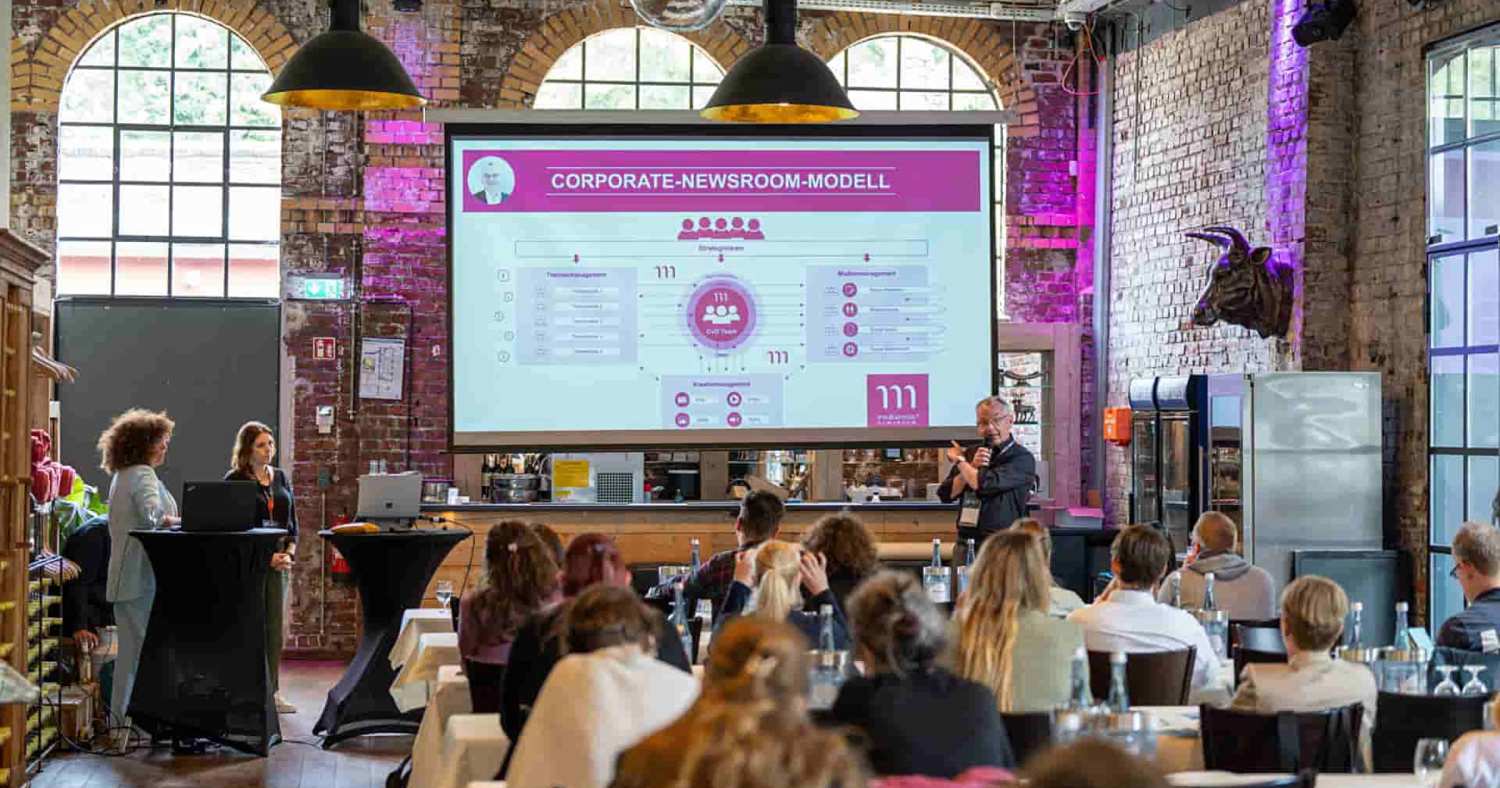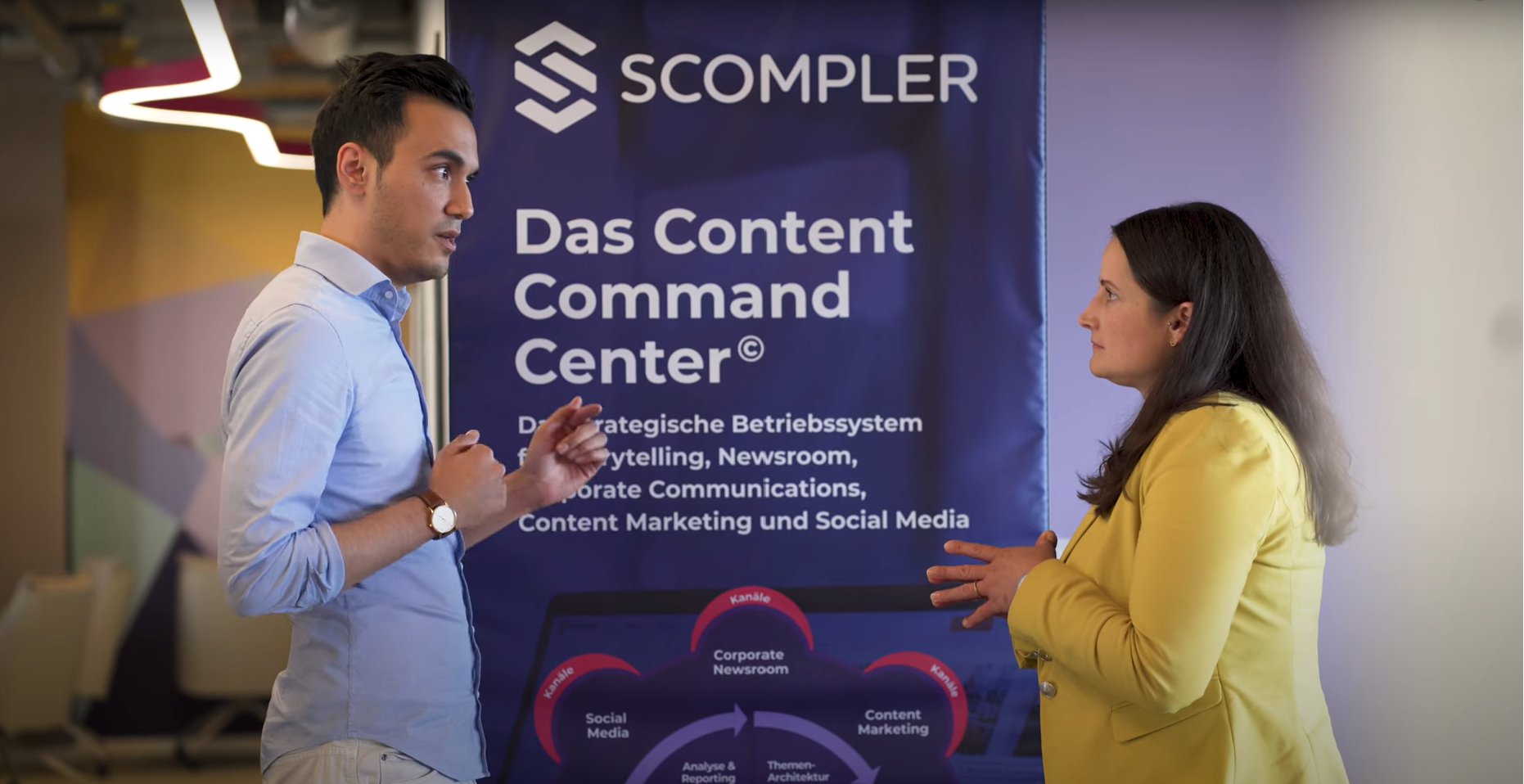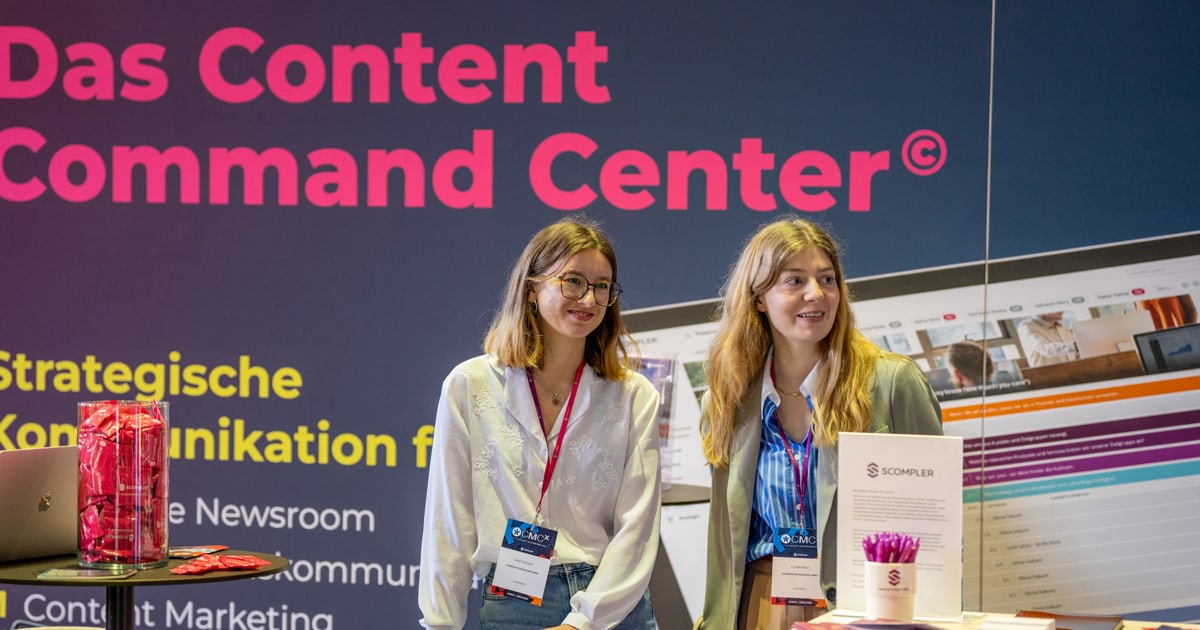The question of "what for?"
The dolphin principle as the key to content transformation
Newsroom, artificial intelligence, work overload, industrialization of communication, commtech, media crisis, outrage culture - the list of challenges for communication departments is long. Very long. The Dolphin Principle Handbook analyzes six typical ways of working in communications and marketing departments and sheds light on how they can best deal with these problems - and in a way that is appropriate to their type.
According to various Scompler surveys, the majority of communicators see their current role primarily as processing what is put on their desk by the specialist departments or maintaining existing channels. This is done with a predominantly operational, at best tactical, but always action-oriented way of working, usually each on their own: sending out press releases, operating social media, filling intranets, creating brochures. We call this type a "worker bee".
Dolphins trapped in the daily routine of worker bees
However, there is a great desire to work in a more strategic and value-adding way. The question of "what for" is coming to the fore; communication should not just be about generating reach and clicks. Communications departments are striving to be more than just an extended workbench and a simple service provider. They want to develop into a strategic partner of the business that contributes to value creation, i.e. a collaborative, intelligent and purpose-driven activity. We call this type a "dolphin". However, most departments are trapped in the stressful daily routine of the worker bees.
Will commtech and AI fix it?
There is a widespread belief that AI and commtech could reduce the workload and allow people to work more strategically. However, the findings of Scompler cast doubt on the effectiveness of this concept. On the one hand, work is not reduced just because it is done faster - on the contrary. Secondly, the reasons for certain ways of working are very diverse. The key to change lies in a better understanding of the mechanisms. The concept of the dolphin principle can make a significant contribution to this.
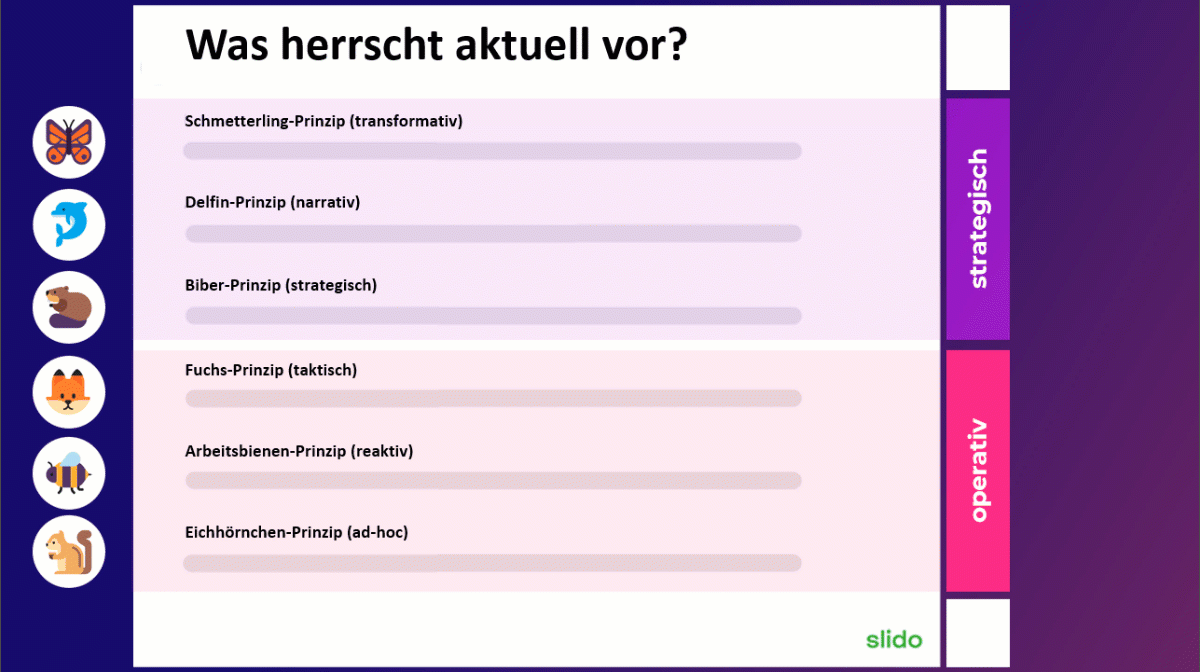
Dolphin principle: Great need for change
At the Communications Congress in Berlin, Scompler founder Mirko Lange asked the participants of his presentation: Which of six strategy principles, complementary to six animals, do you currently work according to? The results of the survey correspond to those of other surveys:
88 percent of communications departments currently work operationally, with worker bees predominating. But 96 percent want to work strategically, i.e. as butterflies, dolphins or beavers. The desire to work as dolphins clearly predominates.
We are currently working on a major scientific study on the dolphin principle, which will be available early next year.
Strategy, i.e. the question of "why", is becoming so important precisely because commtech and AI are so powerful (please click to start animation):
With Scompler into the systemic dolphin world
Scompler offers a comprehensive system for shaping change. For squirrels, worker bees and foxes, Scompler is a practical tool that helps to organize communication in a better planned, transparent and much simpler way for everyone. Scompler supports the work of all departments from the newsroom and press relations to social media, internal communication and editorial offices on a single, central system.
In addition, the strategic mindset is built right into Scompler . Scompler acts as a catalyst for a new mindset because Scompler provides effective support in thinking in terms of topics and constantly making people aware of the strategic focus. In addition, Scompler structures all communication and introduces common processes. Departments become connectable and silos are broken down. This makes Scompler a genuine DELFIN tool.











